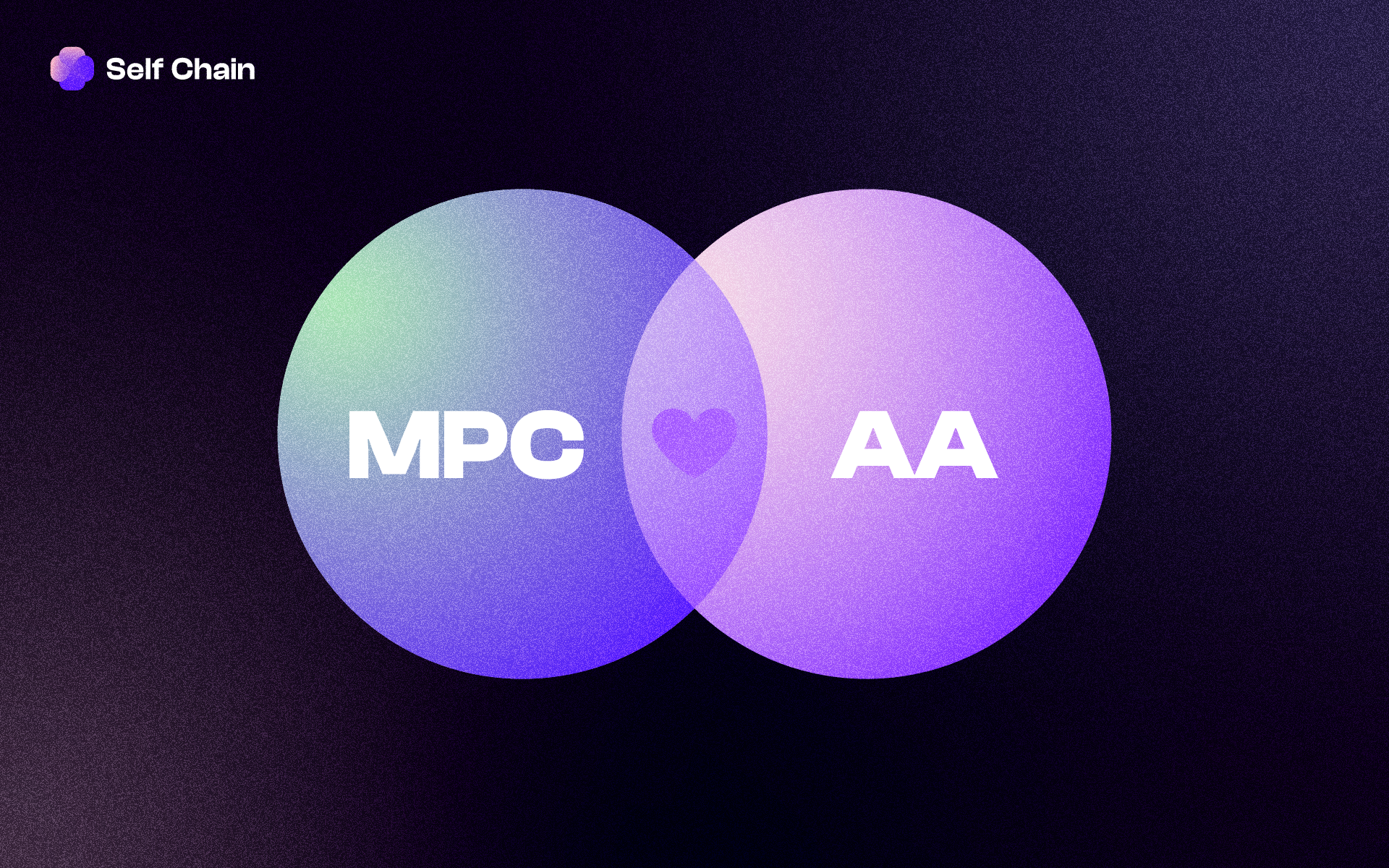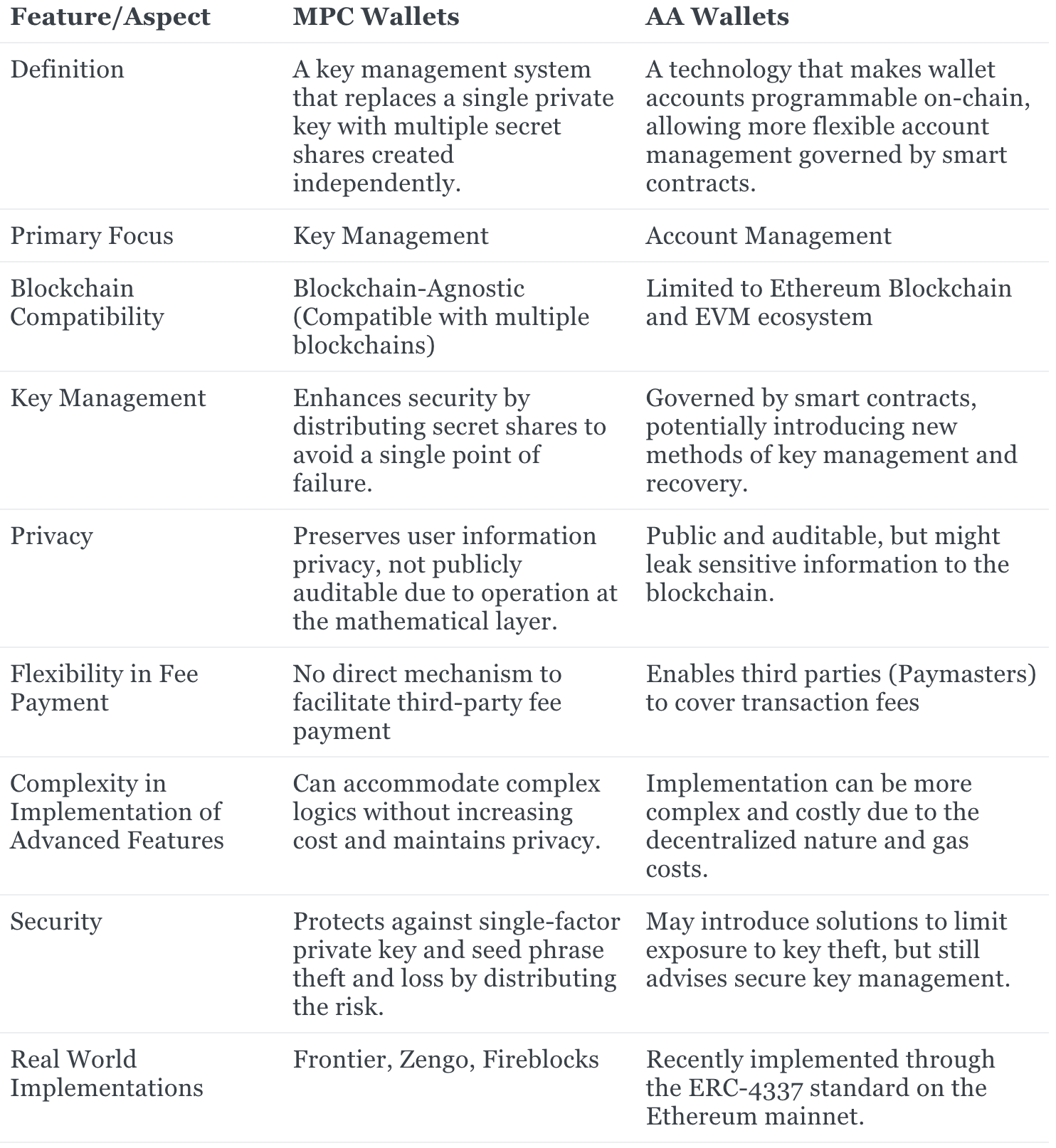Harnessing Synergies: How MPC and AA are Collaborating to Shape the Future of Crypto Wallets
Exploring the synergy between MPC and AA for a secure, user-friendly crypto wallet future.

While there's ongoing discussion in the crypto community about whether MPC or AA takes the upper hand, we understand that words coming from us at Self Chain might be perceived as biased, considering our endeavors in building the Layer 1 Blockchain designed for trustless, next-generation key management for MPC wallets. But please hear us out. The reality is that each technology, MPC, and AA, possesses its own unique set of advantages and drawbacks. In this article, we shift the focus away from this rivalry, choosing instead to spotlight the complementary attributes of these technologies. Our goal is to foster a more nuanced discussion where we can appreciate the potential synergies that could unfold when MPC and AA collaborate, potentially ushering in a new era of innovation in crypto wallets.
Understanding MPC and AA
Before we examine the collaborative potential, it’s essential to grasp what each technology brings to the table.
MPC (Multi-Party Computation):
A technology that replaces the traditional private key with independently created mathematical "secret shares", enhancing security and reducing vulnerability to key and seed phrase theft. Operating at a mathematical layer, it's adaptable to various blockchains, making it an excellent tool for multi-chain wallets.
AA (Account Abstraction):
A revolutionary concept, especially encapsulated by the Ethereum standard ERC-4337, AA allows for on-chain programmable wallet accounts governed by smart contracts. It liberates the account functionalities from the limitations of traditional Ethereum transactions, offering a flexible and customizable user experience.
High-level Comparison: Complementary Strengths
A cursory comparison of MPC and AA reveals that while they serve different primary purposes (key management for MPC and account management for AA), they possess complementary strengths. For instance, MPC, with its secure key management system, can work seamlessly with AA's flexible account management solutions, creating a robust and user-friendly crypto wallet ecosystem.

Our Take: A Collaborative Innovation in Crypto Wallet Technology
Flexibility:
MPC wallets, known for their flexibility, have the potential to integrate seamlessly with various aspects of AA technology. Although integrating MPC functionalities into AA wallets might pose challenges, especially concerning key modifications, the collaborative approach promises to create a more user-centric crypto wallet experience. The combined strengths of both technologies can foster innovative solutions, catering to a broader spectrum of user preferences and needs.
Coexistence of AA and MPC:
We envision a future where AA and MPC coexist, complementing each other's strengths to offer an enriched user experience. As both technologies evolve, there exists a potent opportunity for them to enhance crypto wallet technology collectively. By uniting the decentralized key management of MPC and the programmable functionalities offered by AA, we anticipate a collaborative breakthrough that could potentially set a new standard in crypto wallet technology.
Self Chain's Role in MPC Keyless Wallets and Beyond
The narrative surrounding MPC (Multi-Party Computation) and AA (Account Abstraction) is evolving, transitioning from competition to a story of collaboration and synergy. By acknowledging the complementary strengths and the collaborative potential of these technologies, we are poised at the threshold of a new era in crypto wallet technology. This era promises enhanced security, user-friendliness, and innovation, largely due to Self Chain's role in building the Keyless Wallet infrastructure service empowered by MPC-TSS/AA.
At the wallet level, Self Chain, as the Modular Intent-Centric Access Layer L1 Blockchain, offers several intent-centric features that contribute to this collaborative vision:
- Enhanced Security: Self Chain's keyless wallets bolster security by distributing secret shares, mitigating the risk associated with a centralized private key.
- User-Friendliness: Our approach to self-custody is intent-centric, enabling users to express their intentions securely, enhancing both security and control over digital assets.
- Innovation: Self Chain's modular intent access layer provides a programmable framework for developers, allowing them to create customized solutions and expand the functionality of keyless wallets.
Even though the debate over AA and MPC is still ongoing, Self Chain is enthusiastically open to exploring the possibility of collaboration, underlining our commitment to driving advancements in the crypto space towards a more user-centric future.
About Self Chain
Self Chain is the first Modular Intent-Centric Access Layer1 blockchain and keyless wallet infrastructure service using MPC-TSS/AA for multi-chain Web3 access. The innovative system simplifies the user experience with its intent-focused approach, using LLM to interpret user intent and discover the most efficient paths.
Self Chain ensures that onboarding and recovery are effortless with keyless wallets that grant users complete self-custody over their assets. In addition, it provides automated rewards to dApps when they efficiently resolve user intent, further enhancing the user experience. Moreover, Self Chain incorporates Account Abstraction with MPC-TSS to provide secure signing and reduce transaction fees. It's a platform that redefines blockchain interaction, making it more secure and user-friendly for everyone.
In a world where blockchain technology is becoming increasingly essential, the user experience remains a critical factor in its adoption. Intents and Keyless Wallets are set to transform the landscape, making blockchain interactions more accessible, efficient, and secure. As we move forward, the blockchain industry has the opportunity to provide users with a seamless and enjoyable experience, unlocking the full potential of this groundbreaking technology.
